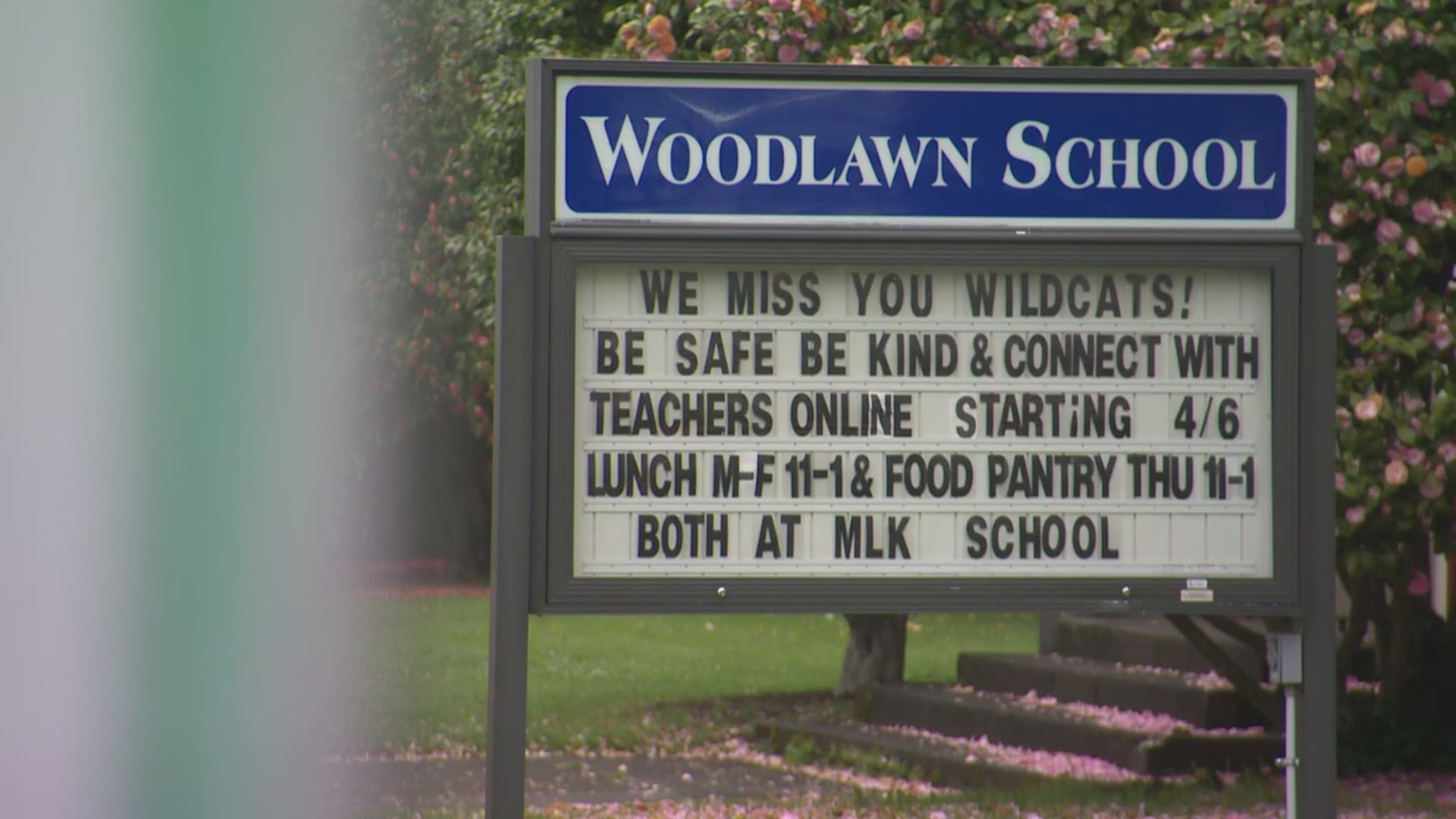PORTLAND, Ore — Woodlawn fifth grader Camryn Green still goes to school every day, only now, it’s in her living room or outside on her porch.
“I just wake up in the morning, go straight downstairs, work on my stuff for an hour or two, take a break and do it again,” said Green.
Her mom, Ashley, was able to get a Chromebook issued by Portland Public Schools almost as soon as Gov. Kate Brown announced in-person school was cancelled for the rest of the year.
“When they sent the first initial email, I jumped right on it. And I went to Roosevelt and luckily there was absolutely no one there when I got there, so it was perfect,” said Greene.
Getting Chromebooks and internet access to kids has been one of the countless challenges administrators across the state have had to deal with during the COVID-19 pandemic.
Woodlawn principal Andrea Porter Lopez has struggled to distribute Chromebooks to many families. She has received 85 of the laptops from the district, but when she and assistant principal Alma Velasquez went to a nearby school to distribute them to families, nobody showed up.
“We’re just trying to get these Chromebooks in kids’ hands. So, we’re pretty much willing to drive to their house and get it to them. So that’s the next step,” said Porter-Lopez.
The elementary school administrators set up outside Woodlawn a few days later in the evening, passed out devices and later dropped off more Chromebooks to the families who couldn’t drive to them.
“My biggest fear was that we would have kids who would not be able to engage in some way,” Velasquez said. “Gradually we're closing that gap.”
First grade teacher Lionel Clegg said it’s been hard to make sure all kids can get connected.
“I keep saying, it’s like building a plane while we’re in the air. We're also trying to set up hotspots for kids that don't have internet access. So, I do appreciate those things,” said Clegg.
For the students who can connect, Clegg and student teacher Emily Nyguen hold weekly meetups through Google Classrooms where they let the kids catch up and ask questions about the work.
Parents are still very involved in the lower grades, helping students log on and sitting next to them during the virtual hang out.
Clegg said he reminds his students, this isn’t summer, school is still in session and the bar is still high.
“You know, just because we're not together doesn't mean that we still can't grow. It doesn't mean that they can't still individually and on their own push themselves to do some extra work and do some extra practice,” he said.
Clegg said his Spanish speaking students are at an even bigger disadvantage compared to children who speak English.
“Some of these programs don't necessarily have a portion or a part that supports children to speak different languages. So, it's, it's still kind of like that unequal opportunities,” he explained.
Melody Flores, one of the other first grade teachers at Woodlawn, said the “Seesaw” learning platform makes it easy for kids to do assignments and send video messages. But she said they are not able to get in a full day of instruction like they would with in-person schooling.
“It's about 45 minutes of reading, writing and math and then up to about two additional hours of extra, um, like specials or extra stuff,” said Flores.
She believes while the kids may be losing out on classroom time, they are gaining other skills.
“I think they are learning so much. There's so many other skills and things that they're learning through the technology piece,” said Flores.
Jai Blair, one of the fourth grade teachers at Woodlawn, also believes students are gaining skills like independence.
“I don't get to roam around the room and say, Hey, stay on task, stay focused. It's really up to them to learn that independence. I believe that they're learning a different life skill than what they're getting inside of the classroom,” said Blair.
While the older students are familiar with the platform and don’t need help from their parents, they may have other responsibilities like helping at home or watching their younger siblings.
“I'm trying to make it as similar to the classroom as possible. So, using Google slides a lot and then having students click on links through that. I'm just trying to make it as comfortable as possible because I know a lot of families are juggling a lot,” said Blair.
Porter-Lopez said they’ll keep trying to connect with the students who haven’t logged on until they find a way to get those kids learning. She said, they have no other choice.
“Kids, they have a right to an education, and we have a responsibility to provide it. That's the profession we chose and it's the line of work that we're in and kids have a right to that.”
About Inside Woodlawn:
KGW investigative reporter Cristin Severance and photojournalists Gene Cotton and Kurt Austin were granted remarkable access to spend the 2019-2020 school year chronicling life inside Woodlawn Elementary School in Northeast Portland. Their reporting offers a rich view of how teachers, administrators, school staff and parents overcome many challenges to serve students. Join us as KGW News goes Inside Woodlawn.
Please follow our year-long series on YouTube, Facebook and by using #insidewoodlawn on Twitter and Instagram.

